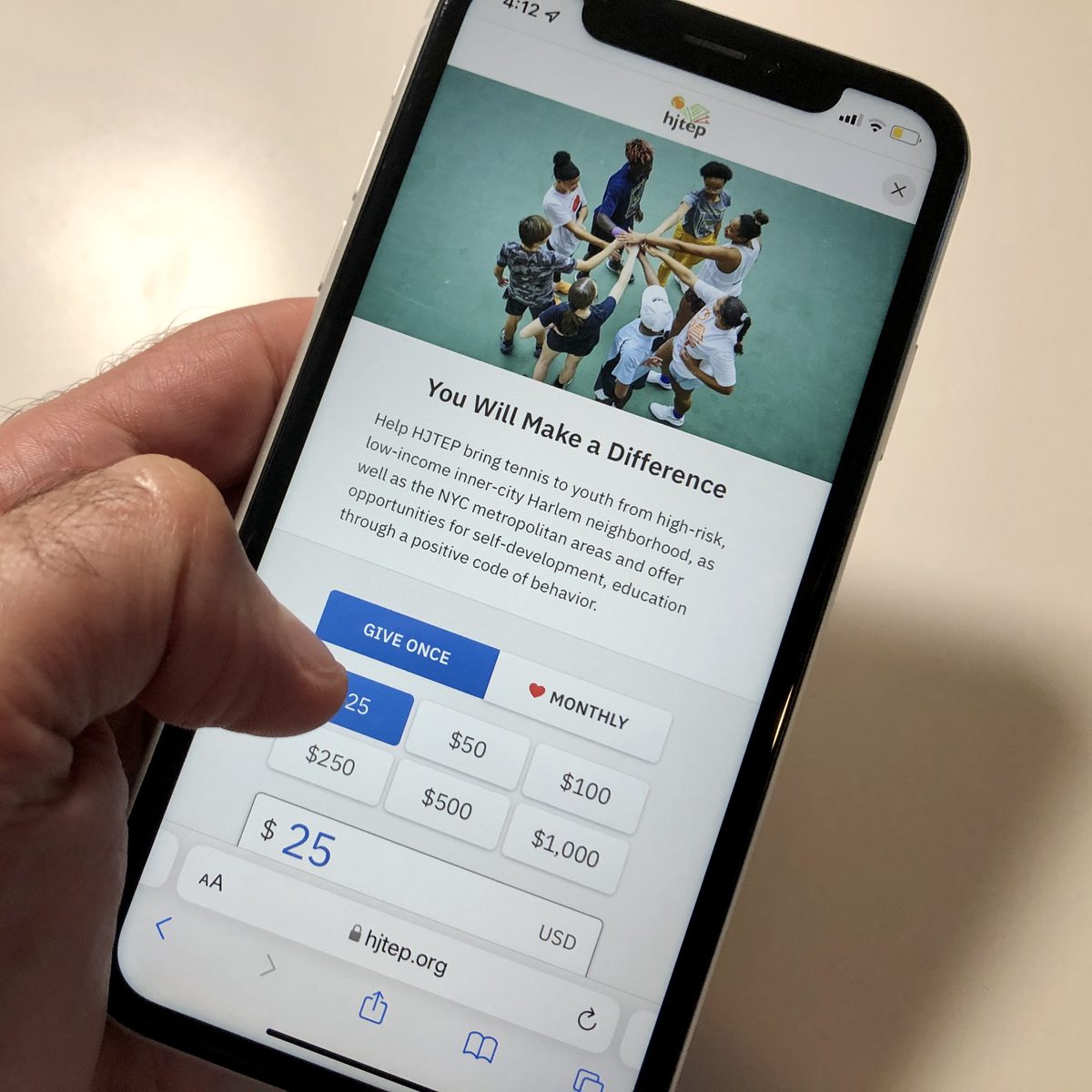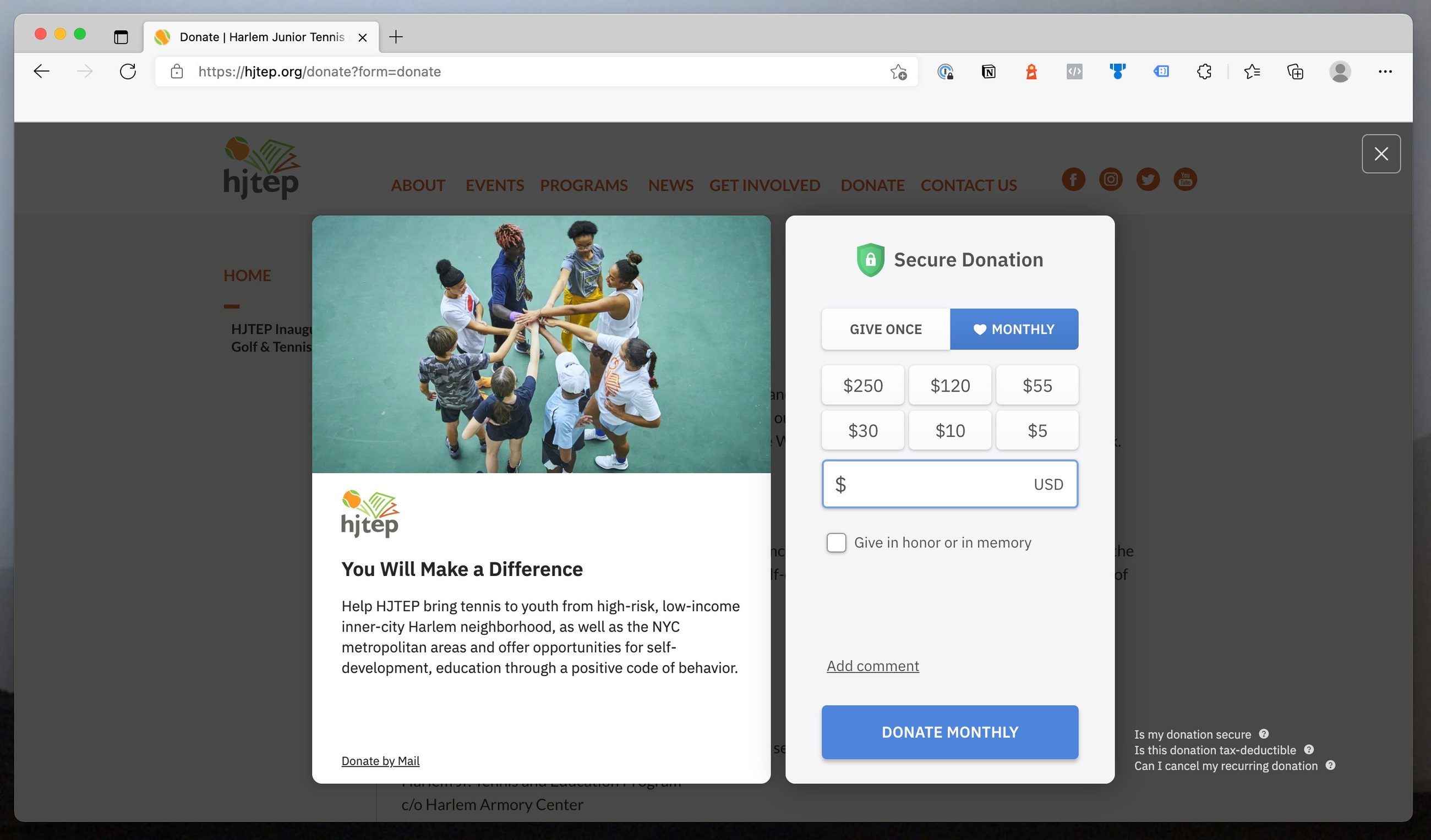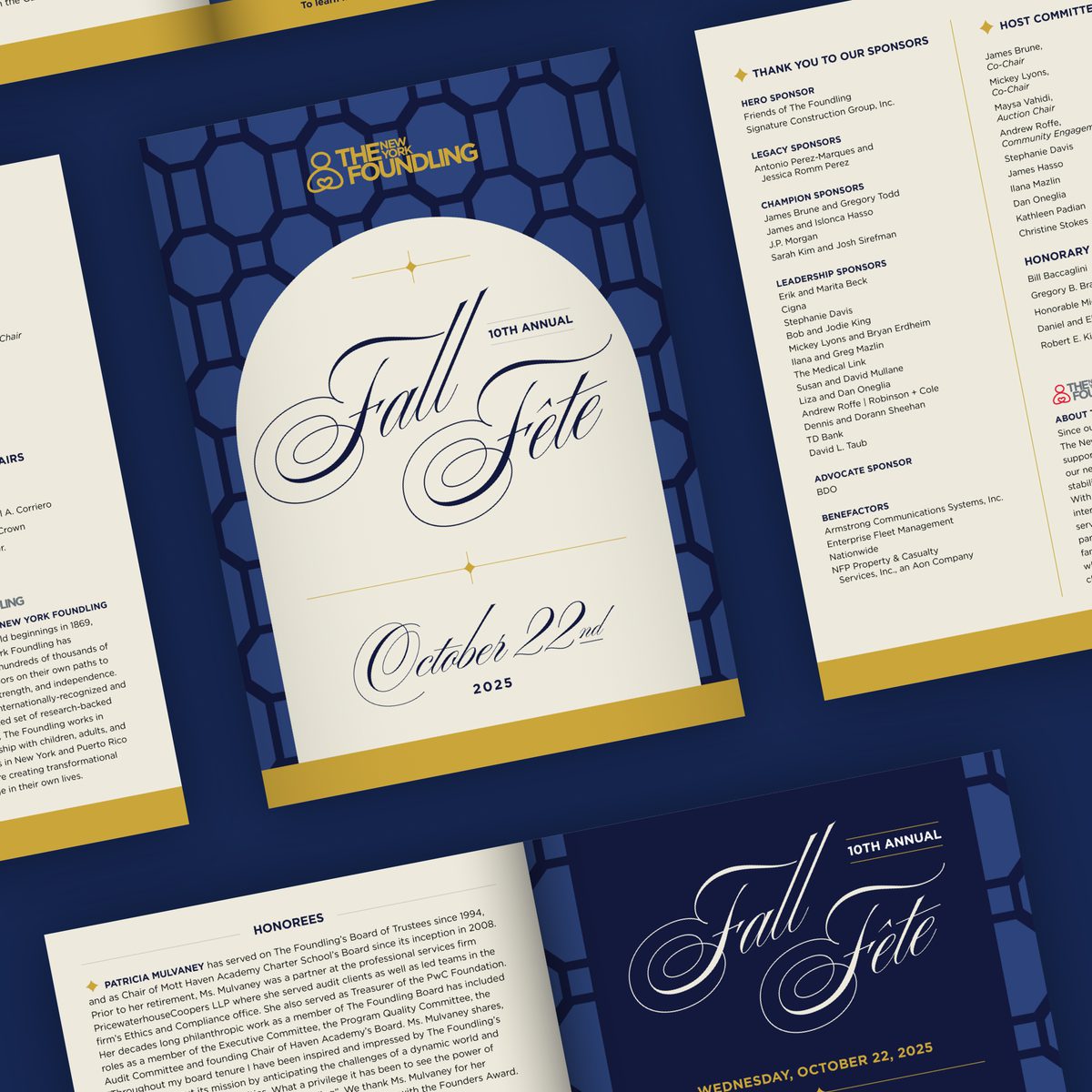- Expand Your Marketing and Outreach

- Need-to-Know Technology
What is the best way for nonprofits to collect donations online?
Are you curious if there is something better than the online donation platform you are using today. Maybe you want to know what is the best one to get started with?
We have built many nonprofit websites that include online donations as a key feature. We have gotten to know a lot of different platforms and their pros and cons.
The best way to collect donations online is to use a donation platform that:
- Integrates with your website
- Let’s your brand shine visually
- Offers a streamlined donation checkout
- Meets accessibility guidelines
- Is mobile friendly
- Offers multiple ways to pay
- Allows donors to cover transaction fees
- Allows you to take your data with you should you decide to switch tools
- Integrates with other tools and services you use
We’ll explore these features in this article. In some cases we’ll share data from two recent clients that use our platform that includes these features. We recommend Fundraise Up and we’ll share a bit more about them with you, too.
1. Your checkout should live on your website
Your donation checkout should live on your website. Links off to third-party hosted pages are not the ideal.
A donation checkout on your website delivers a more streamlined and trust building experience. Your donor will stay on your website and not have to think about who they are transacting with. This approach generally reduces clicks as well. Less clicks is always a good thing.

2. Your visual brand and story should be showcased well
Your donation check out should make your brand shine. You should have opportunities to add your messaging and apply your brand look and feel. Also, consider the experience of completing the forms and how this reflects on your brand. Is the donation experience easy to complete? Is it polished?
3. Your checkout experience should be quick while offering best practice features
A long and complicated checkout form can make a donor think twice and cost you money. You transaction experience should be streamlined to respect the donor’s time.
A great checkout asks for the amount they want to give, confirms it, and then let’s them pay with their payment processor of choice.
If they want to leave a comment, upgrade from a one-time donation to recurring, or make the donation in honor of someone else they should be able to opt in to these with a single click and then see and complete any extra forms that may be needed when they do.
Some forms will present all the options that are available on a single screen which can create a lot of visual clutter and cognitive load. Even if most of what is on screen is optional it still creates effort on the donor to figure out what is required and what is not.
It is so much better to have a dynamic checkout that if someone wants something optional they can “ask” for it with a click and then be shown forms for whatever extra information would go along with it. This way the checkout interface only becomes more involved when it meets the need of the donor.
4. Accessibility is important
Donation forms or widgets added to your website should be compliant with WCAG 2.1 guidelines.
Every supporter should be able to make a donation no matter if they use a mouse, a screen reader, or other assistive technologies to navigate your forms.
5. Your checkout design should work well on all web enabled devices both large and small
Your donation checkout must be responsive and deliver a great mobile experience. The percentage of people using mobile devices is high. You can't afford not to offer a great mobile checkout experience.
Our client partners had an average of 47.5% of donations via mobile devices.
6. Offer multiple forms of payment options to let donors pay the way that works for them
As payment options grow it is important to offer choice to donors. Traditional credit card payments still represent the majority of payments made. Alternative options including Paypal, Apple Pay, Google Pay, Plaid, and ACH merit consideration.
It's important to meet donors where they are and let them pay in the way that is most convenient for them.
Our client partners offered a variety of payment options in their checkouts. We found 76% entered credit card information, 15% Apple Pay, 5% PayPal, 1% ACH, 1% Plaid, and 1% Google Pay. Apple Pay and PayPal stand out as notable.
7. Give donors the opportunity to cover transaction fees
Many donation platforms offer the ability to cover transaction fees. These fees include credit card processing and sometimes the donation platform's transaction cost. This ensures that you receive the full intended donation amount. Transaction fees do add up and can be notable. When donors cover these fees it means a lot more donation dollars for your organization.
We've seen an average of 85% of donors covering fees across all client partner campaigns when the option to cover fees was set as default with an opt out.
We understand concerns around asking donors to cover these fees. An analysis done by Fundraise Up looks at over 450,000 donors over 8 months. Their findings support use of the feature. They also share a case if the majority of donations are less than $80 where you might default to opting in to the feature rather than opting out.
8. Make sure the data you collect is yours and that you can use it to integrate with other systems or take it with you if switch platforms
A modern donation platform should not lock you into it by siloing or holding your data hostage. If you decide to move on to try another platform, make sure your data can come with you. Also, ask what would happen with your recurring donors if you decided to move.
We recommend working with a donation platform that supports Stripe.com or a similar third-party payment processor. The idea is to use your own payment processor that is separate but integrated with your donation platform.
If you use your own Stripe account your transaction data are still in an account you control. Your transaction data is separated from the donation platform. You may even be able to migrate all your historical and/or recurring donors to the new platform if it uses Stripe.
Too many donation platforms lock you in to their donation processor and platform, making it hard to move away from them. This is particularly true with recurring donors. Moving recurring donors from one platform to another is a notable and often a costly challenge. If your recurring donors are in your Stripe account it will likely have less if not no disruption in operations to change platform.
9. Your platform must offer ways to integrate with other tools in your organization’s stack
Donation platforms are one part of a stack of technologies used by most organizations. You need your donor data to be in your CRM (Salesforce) and your email marketing (Mailchimp).
Make sure the donation platform offers integration opportunities.
They should offer direct integrations, use Zapier.com, and/or offer an API (application programming interface). Direct and Zapier integration offer a no-code option. You won't need a web developer to connect your donation platform to other services and automate data sharing.
Platforms should support Google Analytics and Facebook Pixels. This allows for connecting website and marketing analytics to donation conversions. Want to know if a Facebook or Google Grant ad resulted in a donation? Your platform talking to Google and Facebook will make that possible.
What platform do we recommend?
There are a lot of donation platforms out there. Many are great. One platform that checks all the feature "boxes" listed above and more is Fundraise UP.
In getting to know Fundraise Up, we liked the values of the product and the attention to detail represented in the features they offer. They have a platform that allow us to affordably create a beautiful donation experience on your website. It has a wealth of features that power smart donation conversions. They don't lock you in and offer excellent integration opportunities.
We invested in becoming a Fundraise Up partner. Since then, we have successfully supported multiple small and mighty organizations using this tool. This is a great platform whether you are a small organization just getting started or a large and established one.
If you have any interest in learning more about Fundraise Up or Minds On Design Lab and our services, reach out and let's connect.
More Articles
- Expand Your Marketing and Outreach
A thoughtful approach to nonprofit event branding
- Expand Your Marketing and Outreach
Expert-backed tips to boost donations through your website
Mightier Newsletter
Join our community of nonprofiteers and the partners that support them. Our monthly newsletter includes resources with small and mighty teams in the social sector in mind – sharing tips to help with content creation, website use, marketing, and more.
SubscribeBrought to you by MOD-Lab
At MOD-Lab, we're the thoughtful design partner for small teams like yours doing big things in the social sector. We create memorable branding, design materials, and websites that showcase the quality of your work and reflect your true impact.


